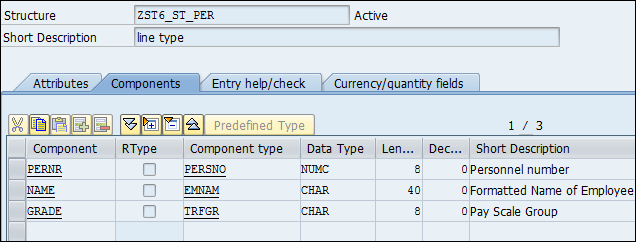In this recipe, we will see how we can create transformations for dictionary table types. We will first create a table type using SE11 and then generate its transformation using the graphical tool editor of the transaction XSLT_TOOL.
We will create a table type, ZST6_TT_PER, that will comprise of employee number, PERNR, employee name, NAME, and grade field, GRADE.
We will now carry out the following steps:
Call transaction
SE11. We will first create a line type by the name of ZST6_ST_PER. Enter the name in the Data Type field. Then, click on the Create button and choose the Structure option in the dialog box that appears.
Next, we specify the fields of the line type. These are: PERNR, GRADE, and NAME. These are based upon the component types, PERSNO, TRFGR, and EMNAM, respectively.

We then create a table type using the transaction
SE11. We give it the nameZST_TT_PER. We make sure that the line type defined earlier is used as...



